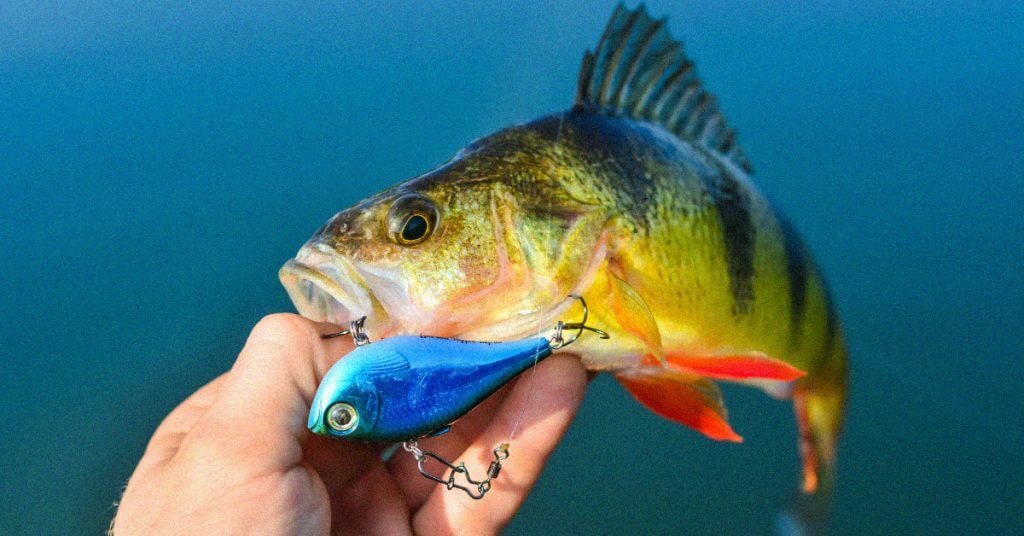Want to catch more smallmouth? Forget what you know about lure size. Here’s why downsizing triggers explosive strikes – and which baits the pros don’t want you to know about.
Last Updated: January 22nd, 2025
Dropshots

Do you ever wonder why a lot of pro anglers reach for their “go-to” rig when tournament money is on the line? One of those dominant smallmouth rigs is the dropshot and the secret comes from the unique presentation that a lot of anglers neglect.
The dropshot presentation allows you to keep a worm or other soft plastic suspended while maintaining the proper position in the water column, few presentations allow you to do that while not having to constantly work them.
Berkley PowerBait dominates tournaments for good reason. Its scent technology and lifelike action create a perfect storm of attraction. The dropshot keeps that bait dancing naturally, mimicking an injured baitfish that very few smallies can ignore.
I’ve found that pairing a dropshot with a worm, soft plastic, or PowerBait is my secret weapon for catching those elusive smallmouth that have given me the slip for years.
Bucktail Hair Jig
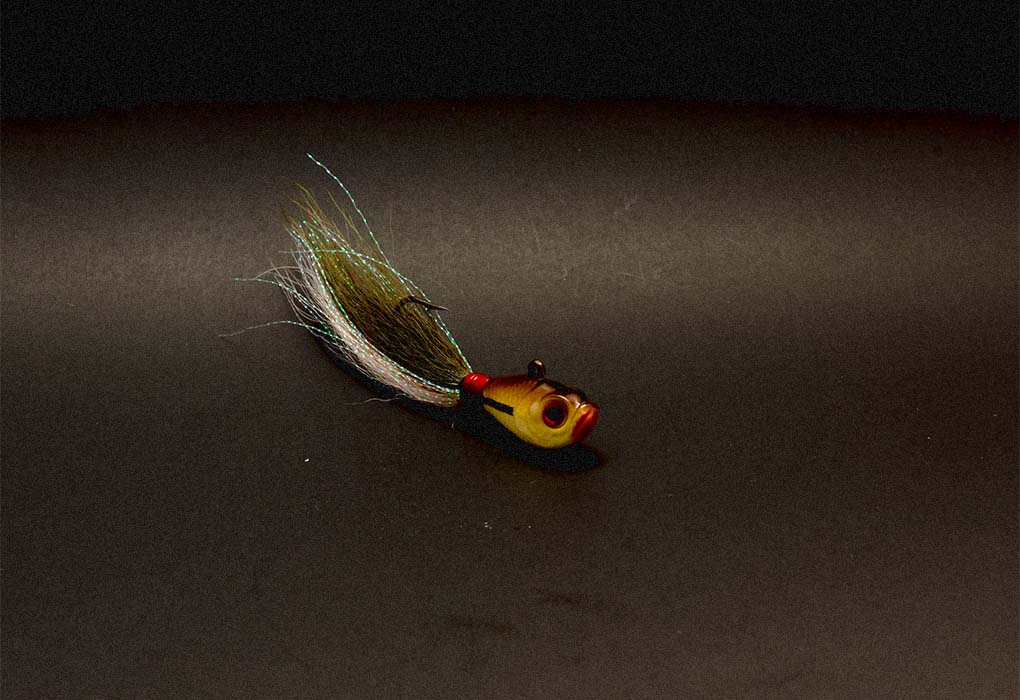
Want to know the one jig pattern that made me swear off all other lures for a whole summer? After watching a seasoned guide in Western PA pull in smallmouth after smallmouth with this simple secret, I had to know more.
The bucktail jig isn’t just another hair jig – it creates an almost hypnotic presentation by staying perfectly parallel and drifting through the water like a wounded baitfish.
I fish it near the surface, but here’s what makes it truly versatile: you can work it deep too. In clear water, this presentation becomes absolutely deadly because it triggers those visual feeders in a way other lures just can’t match.
These are one of the best lures for smallmouth bass in clear water because the water allows the bass to see them clearly and you can make the most of the presentation.
Want to stop guessing which lure to tie on?
Download our free bass lures cheatsheet to get instant access to the same rules I follow for every trip!
Tube Bait
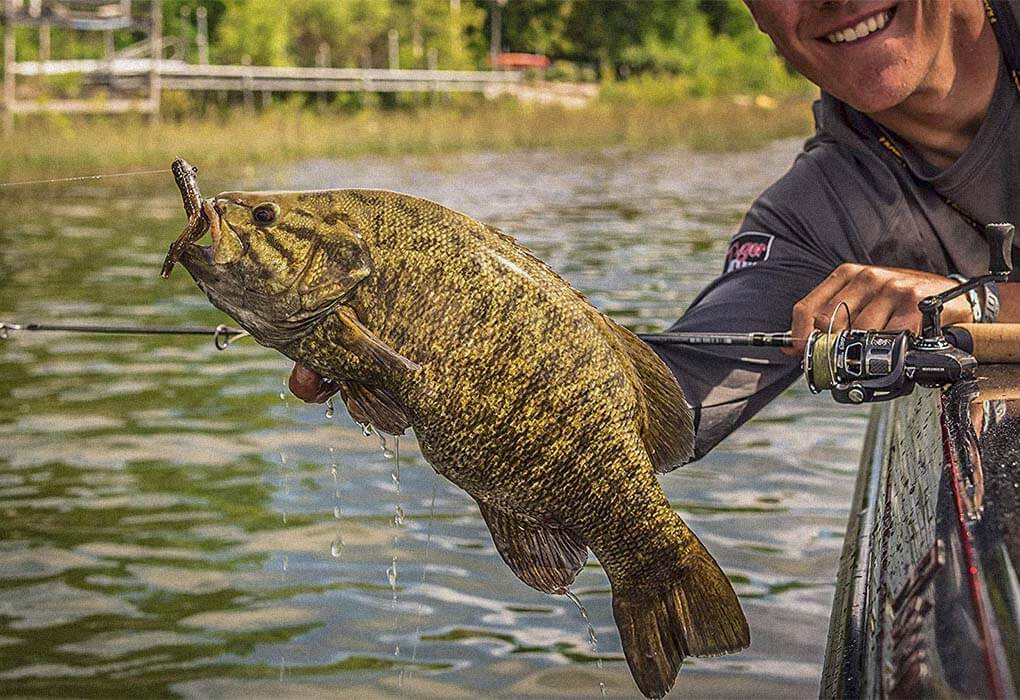
What if I told you the most effective smallmouth bait in my tackle box isn’t even “real” bait? After years of skepticism, one scented plastic convinced me to ditch my live bait forever – and it’s not what you might expect.
I was resistant to PowerBait tubes at first, but these scented lures have become my confidence bait. The tentacles create such a lifelike action that smallies can’t resist, and I’ve got the catch counts to prove it.
While some anglers balk at the price, I’ve discovered a budget-friendly alternative that performs nearly as well: YUM tubes.
Here’s the key to making either option deadly effective: Match your color to the conditions (bright for murky water, subtle for clear), and rig it with a jig head.
This combo is absolutely lethal for big bass year-round, especially when you work it through cover.
Jerkbait and Stickbait
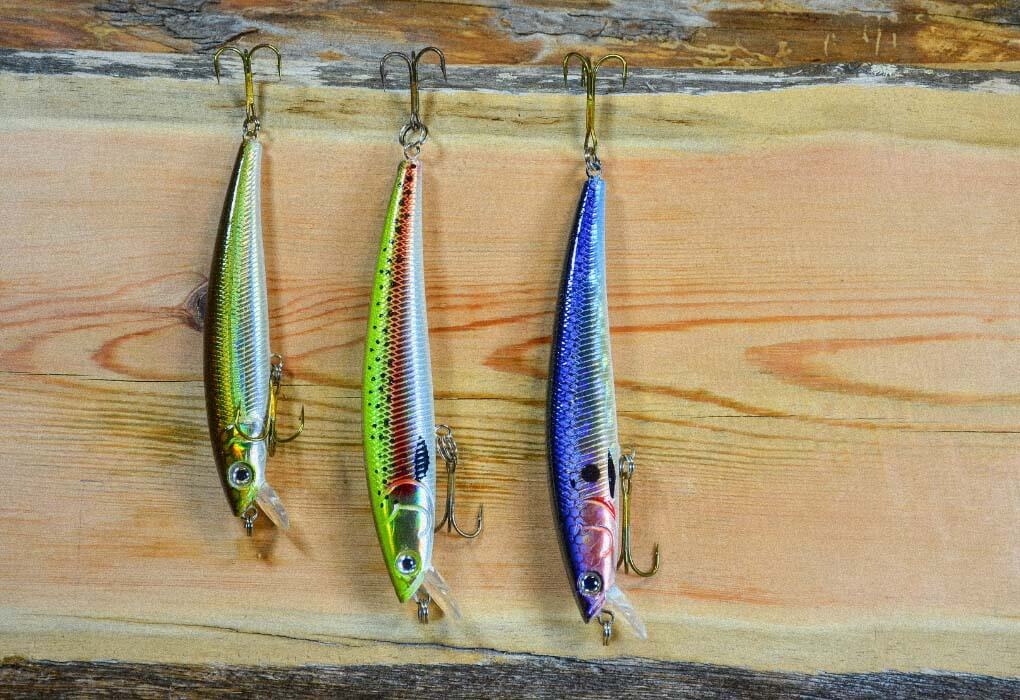
The day I watched a 5-pound smallmouth chase down my bait for 15 feet before crushing it changed everything I thought I knew about triggering strikes. The simple twitch-and-pause retrieve that triggered that bite has since become my most reliable trophy producer.
Stickbaits and jerkbaits might look like simple minnow imitators, but they’re actually psychological triggers on a string. I’ve found that the erratic, wounded-baitfish action drives smallmouth absolutely crazy, especially in cold water when they’re most likely to chase.
My go-to is the Rapala X-Rap in ghost colors for clear water, but I’ll size up to the Shadow Rap when I’m around bigger bait schools.
The real magic happens when you master the cadence. Most anglers work these baits too fast – I’ve learned that sometimes the longest pause you can stand is exactly what it takes to make a big bronze show herself.
In fact, my biggest smallmouth of last season came after a pause so long I nearly reeled in to recast.
Topwater Spooks
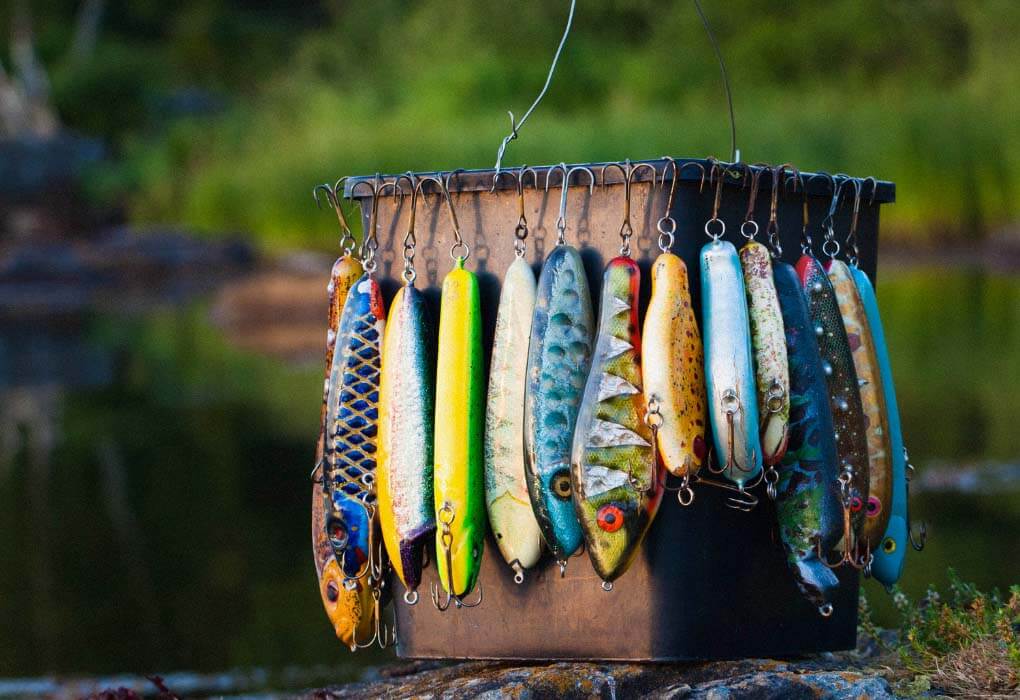
The moment still plays in my mind like slow motion: a perfect summer dawn, glass-calm water, and the most violent topwater explosion I’ve ever witnessed. What happened next taught me why the old-timers call walking a spook “smallmouth candy.”
I used to think walking the dog was just for show – until I discovered the almost unmatched effect it can have on river smallies.
That side-to-side dance of a Zara Spook or Lucky Craft Sammy creates such a vulnerable profile that even pressured fish can’t help themselves.
The key? It’s all in the rhythm. Most anglers rush it, but I’ve found that a slower, more deliberate cadence drives these bronzebacks absolutely wild.
On those windless mornings when you can hear a pin drop, there’s nothing – and I mean nothing – more exciting than watching a big smallmouth shadow your spook for 10 feet before detonating on it.
I’ve even started keeping my camera ready because the strikes are that spectacular.
Spinnerbaits
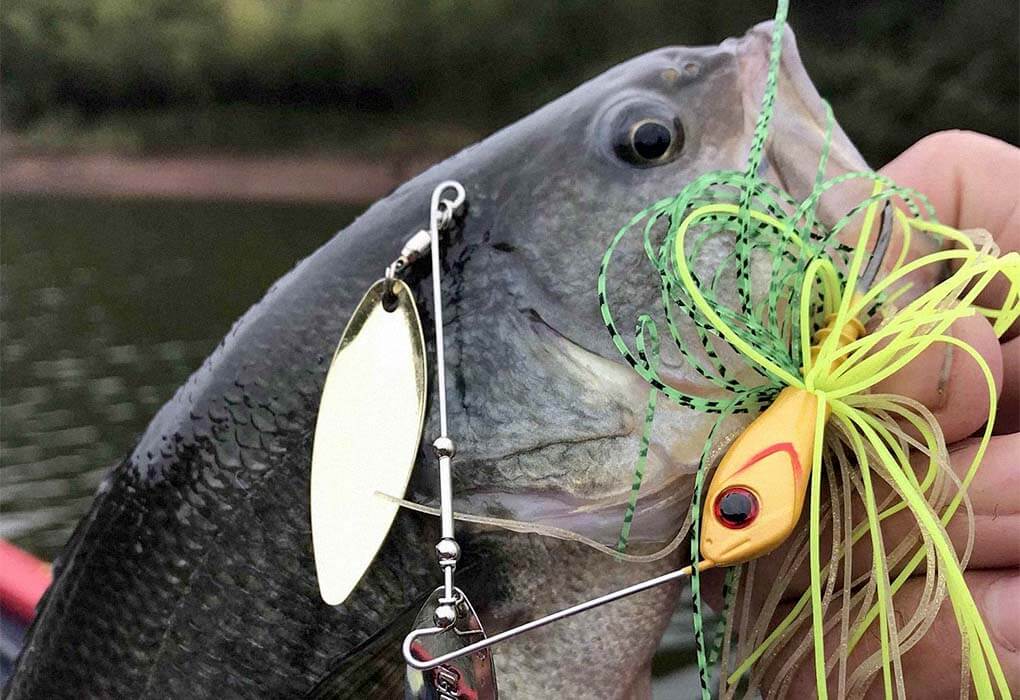
The smallest spinnerbait in my box has caught more big smallmouth than all my expensive lures combined.
Here’s what “big-bait” doesn’t want you to know:
The Booyah Pond Magic might look like a bass pond toy, but don’t let its size fool you – it’s an absolutely lethal smallmouth bass bait.
Something about its compact profile and perfectly-paced blade combination triggers strikes when nothing else will.
I’ve found that smallmouth absolutely crush this bait when I slow-roll it just fast enough to feel that subtle blade thump. But here’s the real secret: when you see others throwing those crazy colored spinnerbaits, stick with white and silver.
I learned this the hard way after watching a veteran guide outfish me 5-to-1 with a simple spinnerbait setup.
Mini Crankbaits

The moment I watched a tournament angler pull four smallies over three pounds using a crankbait half the size of my thumb, I knew I’d been doing it all wrong. In fact, most anglers’ biggest mistake is thinking they need to always match the size of the bait to the size of the fish.
Those tiny KVD Square Bills and Rebel Crawdads might look like they belong in a trout stream, but they’re absolutely deadly on trophy smallmouth. I discovered why by accident: these compact cranks trigger a predatory response that bigger baits just can’t match.
It’s not about feeding – it’s about making those bronzebacks angry. The smaller profile actually makes big fish more aggressive, not less. Remember… they’re opportunistic predators.
Here’s what really blew my mind: when I downsized my cranks, I started catching bigger fish. That 2-inch diving crank darting erratically through their zone drives monster smallies crazy in a way that perfectly matches their natural instinct to attack smaller, vulnerable prey.
Grubs
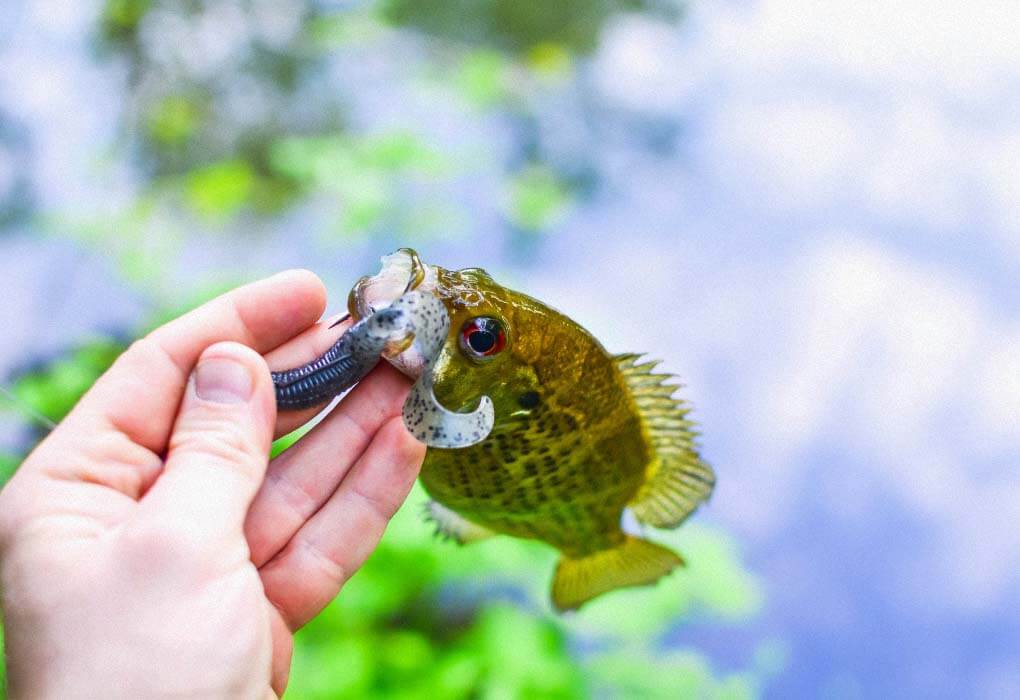
What started as desperation led me to discover why old-school river rats swear by this simple piece of plastic above all else.
I used to think grubs were just beginner baits, but now I know better. That subtle tail thump has fooled more big smallies for me than any other presentation, and here’s the kicker: you can fish them literally anywhere.
While other anglers are constantly switching lures, I’m catching fish on a single grub rigged different ways. Deep pools? Swim it slow. Rocky points? Hop it. Current seams? Let it drift naturally.
I’ve had days where I never opened another compartment in my tackle box, and still outfished everyone else on the water.
Topwater Poppers
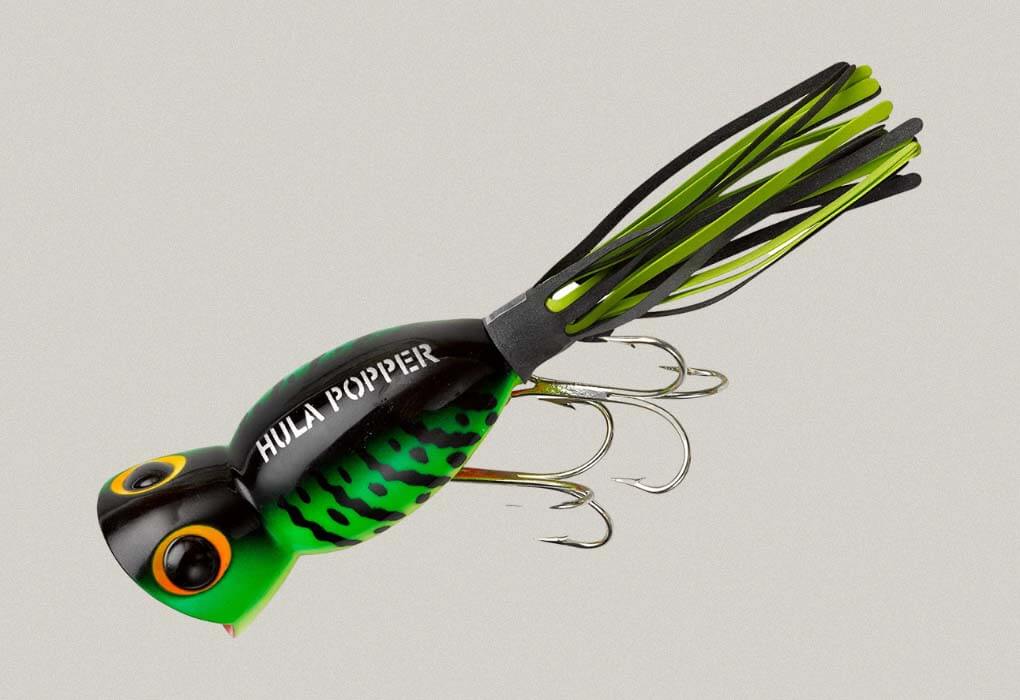
The morning I watched a 4-pound smallie travel 20 feet across a calm pool just to demolish my popper changed everything I thought I knew about topwater fishing.
Most anglers save their poppers for largemouth, and that’s exactly why they’re missing out on the most explosive strikes in freshwater.
I used to think the Rebel Pop-R and STORM Chug Bug were just for calm summer days until a crafty river guide showed me how these little surface disturbers drive smallmouth absolutely crazy in almost any conditions. The key?
Forget everything you know about traditional “pop-and-pause” retrieves. The real magic happens when you master what I call the “nervous baitfish” cadence – tiny spits of water that make bronze backs lose their minds.
What really gets me is how a properly worked popper can pull smallmouth up from 15 feet deep. I’ve watched them rocket up from deep structures like torpedoes, creating a strike so violent it’ll make your heart stop. Even better?
When one fish blows up on it, the commotion often triggers a feeding frenzy that can turn a slow morning into the best hour of fishing you’ve ever had.
What Size Lure For Smallmouth Bass
Wondering why your buddy’s “undersized” lures are outfishing your standard bass gear 3-to-1? Here’s the truth about smallmouth lure sizing.
Smallmouth bass prefer lures between 2-4 inches long. Use 2-3 inch lures in clear water and when fish are less aggressive. Size up to 3-4 inches in stained water or during active feeding periods. Match local baitfish size whenever possible.
Not sure what size to use? Our lure size selector in the bass lure cheatsheet can help. Download it here!
How to Choose The Top Smallmouth Bass Lure Color
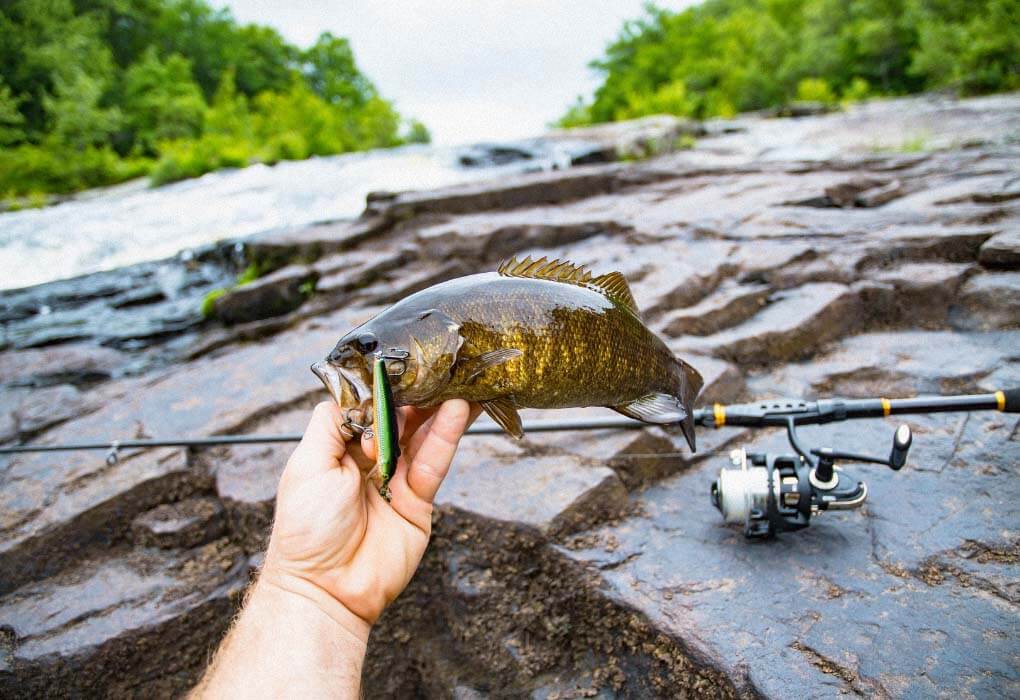
To master the finesse style of fishing that smallies need, you need to understand how color impacts that.
Check this out:
- Spring bass lures: Bright colors
- Summer bass lures: Bright colors
- Fall bass lures: Bright and Natural colors
- Winter bass lures: Natural colors
If you have cold water, they’re less active, so they will back off from something that intimidates them. Now, let’s make this even better:
- Spring Sunny: Bright colors
- Spring Overcast: Natural colors
- Summer Sunny: Bright colors
- Summer Overcast: Bright colors
- Fall Sunny: Bright colors
- Fall Overcast: Natural colors
- Winter Sunny: Natural colors
- Winter Overcast: Natural colors
Hopefully, you see the trend here. Warmth and sun go hand in hand, so you’ll want to use a brightly colored lure when it’s sunny out.
The sun will create a better reflection off the spinnerbait blade or bright-colored smallmouth bass lure, and you’ll have an improved presentation as a result.
Never forget the importance of bass fishing techniques on your overall performance.
Don’t forget that water conditions are important as well. If you have clear water you may want to consider a natural lure. If the water is murky, a bright lure works better.
Final Thoughts
For aggressive smallmouth in clear water, I consistently reach for a 3-inch PowerBait dropshot rig. It’s simply the most versatile setup that produces day after day. When fish are particularly finicky, I downsize to a 2-inch grub or mini crankbait – these compact profiles trigger strikes when nothing else will.
Want to dial in exactly which presentations are working best on your local waters? Drop a comment below with your favorite smallmouth spots and the patterns you’re seeing. I’ll share some specific techniques that have worked for me in similar conditions.
I check these comments daily and love helping fellow smallmouth anglers dial in their approach!




